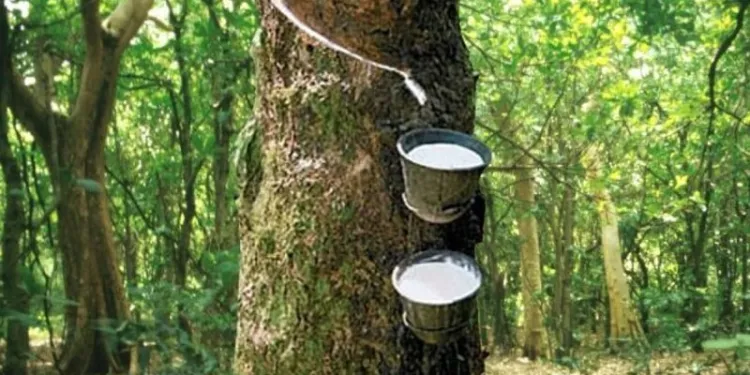Thai rubber exports will remain on the rise in 2013, with growth estimated at about 3-5% boosted by higher demand from emerging markets including China, India and Brazil.
According to Luckchai Kittipol, honorary president of the Thai Rubber Association, the industry was expected to end 2012’s shipments with not more than 3 million tonnes, slightly more than the 2.99 million tonnes in 2011.
Export value, however, was estimated at 250 billion baht in 2012, compared with 300 billion baht in 2011.
That sharp decrease was partially due to a price drop as growth slowed in China, the top consumer, and Europe.
Rubber prices plunged 43% in 2011 and reached its lowest point in almost three years by mid-2012, leading Thailand, Indonesia and Malaysia, representing about 70% of global natural rubber supply, in August to agree on steps to boost prices.
As part of the move, Thailand, the top shipper, at first allocated 15 billion baht to purchase 100,000 tonnes of rubber.
Later, in September, it raised spending worth another 30 billion baht to purchase rubber from farmers at above-market rates to shore up prices.
The target buying price came in line with earlier cabinet approval for the natural rubber intervention scheme at 100 baht per kilogramme for third-class raw rubber sheets and 104 baht per kg for smoked rubber sheets.
The government’s rubber-buying policy and plans to limit exports will end on March 31.
According to Mr Luckchai, the Thai government was believed to have bought about 200,000 tonnes of rubber in 2012 to keep in state stocks.
FOB (free on board) prices of ribbed smoked rubber averaged 95 baht per kg in 2012 compared with an average 140 baht per kg in 2011, which was the historical high.
According to Mr Luckchai, the rubber price has a chance to rise up to 100 baht per kg this year if the world economy does not worsen and the United States achieves a resolution to its fiscal cliff.
The automotive sector will remain also promising in 2013 after car sales rose in Thailand in late 2012 fuelled by the country’s first-time car buyer programme and car sales recovery in the US and Asian countries.
Japan is also expected to inject more spending to stimulate its economy to avoid deflationary pressure, while China, which has recently had a new leader, is likely to have some new projects to stimulate its domestic economy to reduce external adverse impacts.
Thailand’s rubber production is forecast at 3.6 million tonnes in 2013, a rise from 3.5-3.55 million tonnes in 2012.
Main export markets include China, which accounted for 50% of rubber shipments last year, with the US representing 15% , Malaysia 17-18%, Japan 12%, the EU 10% and India almost 5%.
World rubber supply, meanwhile, is estimated at 11 million tonnes in 2013, a rise of 4-5% from 2012.
Mr Luckchai urged the government this year to promote more rubber for domestic use, particularly in projects such as construction of roads or dams and water reservoirs.
Source: Bangkok Post



























